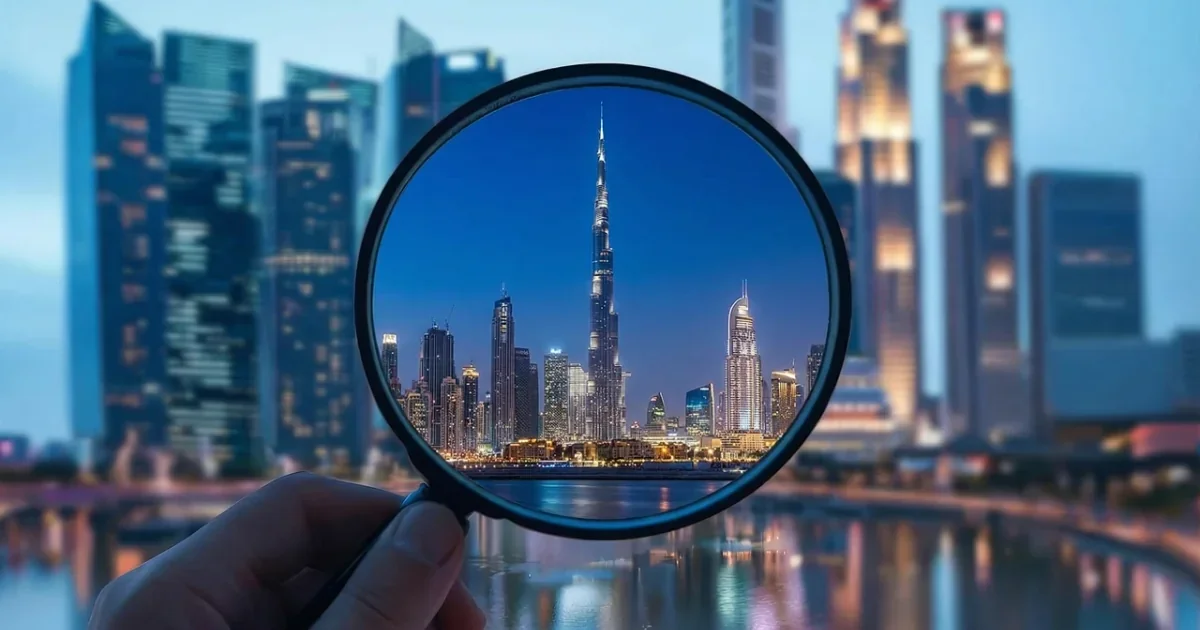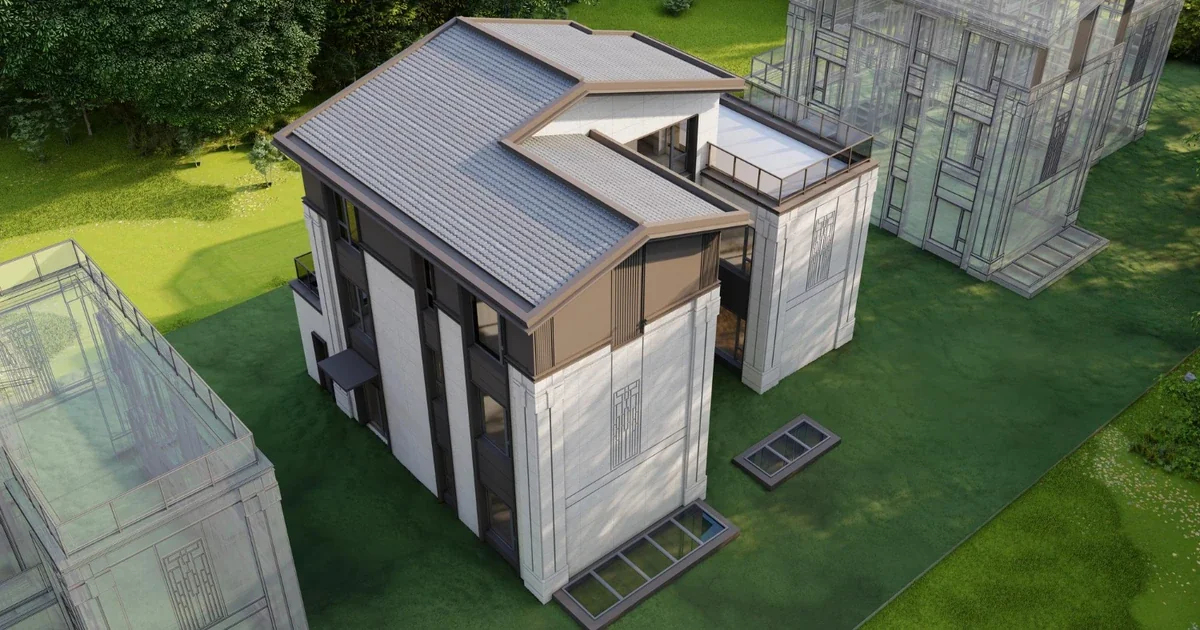All you need to know about Saudi Arabia
March 27, 2024
Saudi Arabia is characterized by its rich history and deep culture that reflects a rich and diverse heritage. The Kingdom is famous for its important cultural and historical sites, such as the AL-masjid AL-haram in Macca (Holy Mosque in Mecca) and AL-masjid AL-Nabawi in Medina (Holy Mosque in Medina), which are considered sacred to the Islamic religion and attract Muslims from all over the world.
In addition, Saudi Arabia is one of the world's largest oil producers and has a strong economy heavily dependent on oil and natural gas, making it a major player in the global energy market.
Saudi Arabia seeks to achieve Vision 2030, which aims to transform and diversify its economy away from complete dependence on oil, promote sustainable development and invest in other sectors such as tourism, entertainment and technology, with the aim of promoting economic development and improving the standard of living of its citizens.
History and naming
Emirate of Diriyah
The first Saudi state represents one of the important periods in the history of the Kingdom of Saudi Arabia, as it was founded in 1139 A.H. / 1727 A.D. by Imam Muhammad bin Saud in the Najd region, with the aim of uniting the Arabian Peninsula, which was suffering from long periods of fragmentation and political and security instability. This state lasted for 94 years, with four rulers from the House of Saud ruling during this period, pursuing a dimension of the work of Imam Muhammad bin Saud. The seat of government continued at Salwa Palace in the Turaif neighborhood of Diriyah, until 1233 A.H. / 1818 A.D. , when the first Saudi state ended and the region came under Ottoman control.
Emirate of Nejd
Following the fall of the first Saudi state, Imam Turki bin Abdullah rebuilt the state and established the second Saudi state in 1240 A.H. / 1824 A.D., choosing Riyadh as its new capital, instead of Diriyah. The second Saudi state continued to rule for 69 years, adhering to the traditions and message it inherited from the previous period. During this period, the state witnessed a succession of rulers among four imams from the House of Saud, starting with Imam Turki bin Abdullah and ending with Imam Abdul Rahman bin Faisal bin Turki. The second Saudi state was characterized by the renewal of political and social life in the Kingdom, and the continuation of efforts to unify the territories under its authority. The strength of this state was embodied in the consolidation of Saudi rule and its unification of diverse regions within its borders, which led to the unification of Saudi Arabia as a single entity.
Nomenclature
In 1932, a historic meeting was held in the city of Taif, attended by scholars, dignitaries and a large gathering of citizens and subjects in the Kingdom of Saudi Arabia. During this meeting, the participants reached an important agreement on the need to change the name of the Kingdom from \"Kingdom of Hejaz and Najd and its annexes\" to a name that reflects the unity and cohesion of the state. After discussions and deliberations that lasted for a while, the attendees reached a decision to include the name \"Kingdom of Saudi Arabia\" as a new official name that fully reflects the unity of the state and its national identity.
Geographical location
The Kingdom of Saudi Arabia enjoys a distinctive geographical location, as the Kingdom is located in the southwest of the continent of Asia, and its western borders are formed from the Red Sea, and the eastern borders are represented by the United Arab Emirates, the Arabian Gulf and Qatar, while it is bordered on the northern side by Kuwait, Iraq and the Kingdom of Jordan, and Yemen and the Sultanate of Oman on the southern side.
Saudi Arabia Climate
The climate of Saudi Arabia differs from many other regions due to the diversity of its terrain and the impact of tropical air altitude on it. Its climate is generally characterized by drought and extreme heat in the summer, and cold during the winter, with rain falling mainly in the winter and spring, and this rainfall is of little quantity in most areas, except for the southwestern regions, which witness relatively heavy summer monsoon rains. While the climate is mild in the western and southwestern regions, the summers of the central regions are hot and dry, and winters are cold and dry. Temperatures and humidity rise on the coasts, while humidity decreases as we head inland from the country.
Administrative divisions of the Kingdom of Saudi Arabia
The Kingdom of Saudi Arabia consists of 13 administrative regions, and each administrative region is divided into a number of governorates, with the total number of governorates reaching 134 after its increase in 2012. The number of governorates varies from region to region, and the governorates, in turn, consist of a number of centers that are directly linked to the governorate. These centers include a variety of villages, cities, farms, and Bedouin communities, which shape the daily life of residents in different regions. The Eastern Province is the largest region in terms of area in the Kingdom, accounting for about 27.6% of the country's area, while the Al-Baha region is the smallest in terms of area, constituting only 0.6% of the Kingdom's area. Among the governorates, Al-Ahsa governorate stands out as the largest in terms of area, while Al-Harth governorate ranks last as the smallest governorate in the Kingdom, which belongs to the Jazan region. Major cities in the Kingdom that constitute important urban centers include Mecca, Medina, Riyadh, Jeddah, Al Baha, Al Ahsa, Dammam and Jazan.
Vision 2030 for the Kingdom of Saudi Arabia
The Kingdom of Saudi Arabia looks forward to a bright and prosperous future, by achieving the Vision 2030 launched by Crown Prince Mohammed bin Salman, which aims to transform the Saudi economy into a diversified and sustainable economy, by promoting human and social development, and strengthening the Kingdom's position on the global stage.
Through this vision, the Kingdom seeks to promote innovation and leadership in various fields, including technology, industry and renewable energy, and to promote sectors necessary to achieve self-sufficiency.
Vision 2030 also aims to improve the quality of life for Saudi citizens, by providing job opportunities, developing education and healthcare, and strengthening civil society and human rights.
The Kingdom is expected to continue its efforts to achieve this vision with cooperation and coordination between the public and private sectors, and through significant investments in infrastructure, innovation and human resource development.
Advantages of investing in Saudi Arabia
The Kingdom of Saudi Arabia is considered one of the largest and most diverse Arab countries in nature and culture, as Saudi Arabia is famous for its rich natural resources, and is characterized by the presence of the largest oil reserves in the world, which made oil and natural gas major sources of national wealth, in addition to the Kingdom's inclusion of important cultural and religious landmarks, such as the Two Holy Mosques in Mecca and Medina, which attract Muslims from all over the world to perform religious worship, and Saudi Arabia also embraces many archaeological sites that reflect its ancient history and heritage. These advantages make the Kingdom an ideal environment for investment in general, and real estate investment in Saudi Arabia in particular, especially since it is one of the countries that give the investor many advantages, powers and facilities in order to encourage him.
","ar":"المملكة العربية السعودية تتميز بتاريخها الغني وثقافتها العميقة التي تعكس تراثًا غنيًا وتنوعًا. تشتهر المملكة بمواقعها الثقافية والتاريخية الهامة، مثل المسجد الحرام في مكة المكرمة والمسجد النبوي في المدينة المنورة، التي تعدان مقدسين للديانة الإسلامية وجذباً للمسلمين من جميع أنحاء العالم.
بالإضافة إلى ذلك، تعتبر المملكة العربية السعودية واحدة من أكبر منتجي النفط في العالم، وتمتلك اقتصاداً قوياً يعتمد بشكل كبير على النفط والغاز الطبيعي، مما جعلها لاعباً رئيسياً في السوق العالمية للطاقة.
وتسعى المملكة العربية السعودية إلى تحقيق رؤية 2030 التي تهدف إلى تحويل اقتصادها وتنويعه بعيداً عن الاعتماد الكامل على النفط، وتعزيز التنمية المستدامة والاستثمار في القطاعات الأخرى مثل السياحة والترفيه والتقنية، بهدف تعزيز التنمية الاقتصادية وتحسين مستوى المعيشة لمواطنيها.
التاريخ والتسمية
الدولة السعودية الاولى
تمثل الدولة السعودية الأولى إحدى الفترات الهامة في تاريخ المملكة العربية السعودية، حيث أُسست عام 1139هـ/1727م على يد الإمام محمد بن سعود في منطقة نجد، بهدف توحيد شبه الجزيرة العربية التي كانت تعاني من فترات طويلة من التشظي وعدم الاستقرار السياسي والأمني. استمرت هذه الدولة لمدة 94 عامًا، حيث تولّى أربعة حكام من آل سعود الحكم خلال هذه الفترة، حيث تلاحقوا بعدا من عمل الإمام محمد بن سعود. واستمر مقر الحكم في قصر سلوى في حي الطريف في الدرعية، حتى عام 1233هـ/1818م حين انتهت الدولة السعودية الأولى ودخلت المنطقة تحت السيطرة العثمانية.
الدولة السعودية الثانية
في أعقاب سقوط الدولة السعودية الأولى، بادر الإمام تركي بن عبدالله إلى إعادة بناء الدولة من جديد، فأسس الدولة السعودية الثانية في عام 1240هـ/1824م، حيث اختار الرياض لتكون عاصمة جديدها، بدلاً من الدرعية. استمرت الدولة السعودية الثانية في الحكم لمدة 69 عامًا، متمسكة بالتقاليد والرسالة التي ورثتها من الفترة السابقة. خلال هذه الفترة، شهدت الدولة تعاقبًا على الحكم بين أربعة من الأئمة من آل سعود، حيث بدأت بالإمام تركي بن عبدالله وانتهت بالإمام عبدالرحمن بن فيصل بن تركي. تميزت الدولة السعودية الثانية بتجديد الحياة السياسية والاجتماعية في المملكة، واستمرار مساعي توحيد الأراضي تحت سلطتها. تجسدت قوة هذه الدولة في ترسيخ الحكم السعودي وتوحيدها للمناطق المتنوعة داخل حدودها، مما أدى إلى توحيد المملكة العربية السعودية ككيان واحد.
التسمية
في عام 1932م، عقد اجتماعٌ تاريخي في مدينة الطائف، حضره العلماء والأعيان وجمع كبير من المواطنين والرعايا في المملكة العربية السعودية. وخلال هذا الاجتماع، توصّل المشاركون إلى اتفاقٍ مهم حول ضرورة تغيير اسم المملكة من \"مملكة الحجاز ونجد وملحقاتها\" إلى اسم يعكس وحدة الدولة وتماسكها. وبعد مناقشات وتداولات دامت لفترة، توصّل الحاضرون إلى قرار بإدراج اسم \"المملكة العربية السعودية\" اسما رسميا جديدا يعكس تمامًا وحدة الدولة وهويتها الوطنية.
الموقع الجغرافي
تتمتع المملكة العربية السعودية بموقع جغرافي مميز، حيث تقع المملكة جنوب غرب قارة آسيا، وتتشكل حدودها الغربية من البحر الأحمر، والشرقية تتمثل بدولة الإمارات العربية المتحدة والخليج العربي وقطر، بينما يحدها من الجهة الشمالية الكويت، العراق والمملكة الأردنية، واليمن والسلطنة العمانية من الجهة الجنوبية.
مناخ المملكة العربية السعودية
يختلف مناخ المملكة العربية السعودية عن العديد من المناطق الأخرى بسبب تنوع تضاريسها وتأثير المرتفع الجوي المداري عليها. يتميز مناخها عمومًا بالجفاف والحرارة الشديدة في فصل الصيف، والبرودة خلال فصل الشتاء، مع تساقط الأمطار بشكل رئيسي في فصلي الشتاء والربيع، وتكون هذه الأمطار قليلة الكمية في معظم المناطق، باستثناء المناطق الجنوبية الغربية التي تشهد أمطاراً موسمية صيفية نسبياً غزيرة. وبينما يعتدل المناخ في المناطق الغربية والجنوبية الغربية، يكون صيف المناطق الوسطى حاراً وجافاً، وشتاؤها بارداً وجافاً. وترتفع درجة الحرارة والرطوبة على السواحل، في حين تنخفض الرطوبة كلما اتجهنا إلى الداخل من البلاد.
التقسيمات الإدارية للمملكة العربية السعودية
تتكون المملكة العربية السعودية من 13 منطقة إدارية، وتنقسم كل منطقة إدارية إلى عدد من المحافظات، حيث بلغ عدد المحافظات الإجمالي 134 بعد زيادتها في عام 2012م. تتباين عدد المحافظات من منطقة إلى أخرى، وتتكون المحافظات بدورها من عدد من المراكز التي ترتبط مباشرة بالمحافظة. تشمل هذه المراكز مجموعة متنوعة من القرى، والمدن، والمزارع، والتجمعات البدوية، التي تشكل الحياة اليومية للسكان في المناطق المختلفة. وتتميز المنطقة الشرقية كأكبر منطقة من حيث المساحة في المملكة، حيث تمثل حوالي 27.6% من مساحة البلاد، بينما تعد منطقة الباحة هي الأصغر من حيث المساحة، حيث تشكل نسبة 0.6% فقط من مساحة المملكة. ومن بين المحافظات، تبرز محافظة الأحساء كأكبرها من حيث المساحة، بينما تتبوأ محافظة الحرث المرتبة الأخيرة كأصغر محافظة في المملكة، والتي تتبع لمنطقة جازان. ومن المدن الرئيسية في المملكة التي تشكل مراكز حضرية مهمة: مكة المكرمة، والمدينة المنورة، والرياض، وجدة، والباحة، والأحساء، والدمام، وجازان.
رؤية 2030 للمملكة العربية السعودية
تتطلع المملكة العربية السعودية إلى مستقبلٍ مشرق ومزدهر، من خلال تحقيق رؤية 2030 التي أطلقها ولي العهد الأمير محمد بن سلمان، والتي تهدف إلى تحويل الاقتصاد السعودي إلى اقتصاد متنوع ومستدام، من خلال تعزيز التنمية البشرية والاجتماعية، وتعزيز مكانة المملكة على الساحة العالمية.
من خلال هذه الرؤية، تسعى المملكة إلى تعزيز الابتكار والريادة في مختلف المجالات، بما في ذلك التقنية والصناعة والطاقة المتجددة، وتعزيز القطاعات اللازمة لتحقيق الاكتفاء الذاتي .
تهدف رؤية 2030 أيضًا إلى تحسين جودة الحياة للمواطنين السعوديين، من خلال توفير فرص العمل، وتطوير التعليم والرعاية الصحية، وتعزيز المجتمع المدني وحقوق الإنسان.
ومن المتوقع أن تستمر المملكة في جهودها لتحقيق هذه الرؤية بتعاون وتنسيق بين القطاعين الحكومي والخاص، ومن خلال استثمارات كبيرة في البنية التحتية والابتكار وتطوير الموارد البشرية.
مميزات الاستثمار في المملكة العربية السعودية
تعتبر المملكة العربية السعودية واحدة من أكبر الدول العربية وأكثرها تنوعًا في الطبيعة والثقافة، حيث تشتهر السعودية بمواردها الطبيعية الغنية، كما تتميز بوجود أكبر احتياطيات النفط في العالم، مما جعل النفط والغاز الطبيعي مصادر رئيسية للثروة الوطنية، بالإضافة إلى ضم المملكة معالم ثقافية ودينية هامة، مثل الحرمين الشريفين في مكة المكرمة والمدينة المنورة، والتي تجذب المسلمين من جميع أنحاء العالم لأداء العبادات الدينية، كما تحتضن السعودية العديد من المواقع الأثرية التي تعكس تاريخها العريق وتراثها الغني.
هذه المميزات تجعل من المملكة بيئة مثالية للاستثمار بشكل عام، والاستثمار العقار في السعودية بشكل خاص، لا سيما وأنها من الدول التي تمنح المستثمر العديد من الميزات والصلاحيات والتسهيلات في سبيل تشجيعه.
Keywords
What is your budget?
Recommended Articles

December 15, 2025
How to Choose the Right Property in the UAE? 2026 Investor Guide
How to choose the right property in the UAE for 2026. A comprehensive guide covering best areas, ROI calculation, and off-plan buying risks.

November 13, 2025
Turkey’s 2025 Economic Program: How Will It Affect Inflation, the Lira, and the Real Estate Market?
The new Turkish economic program: what it means for investors and how it will impact inflation, the lira, and real-estate investment opportunities in Turkey.

July 8, 2025
Modular vs. Traditional Construction: Speed, Cost, and Durability
A comparison of modular and traditional construction in terms of execution speed, project costs, and durability—essential insights for real‑estate investors.
